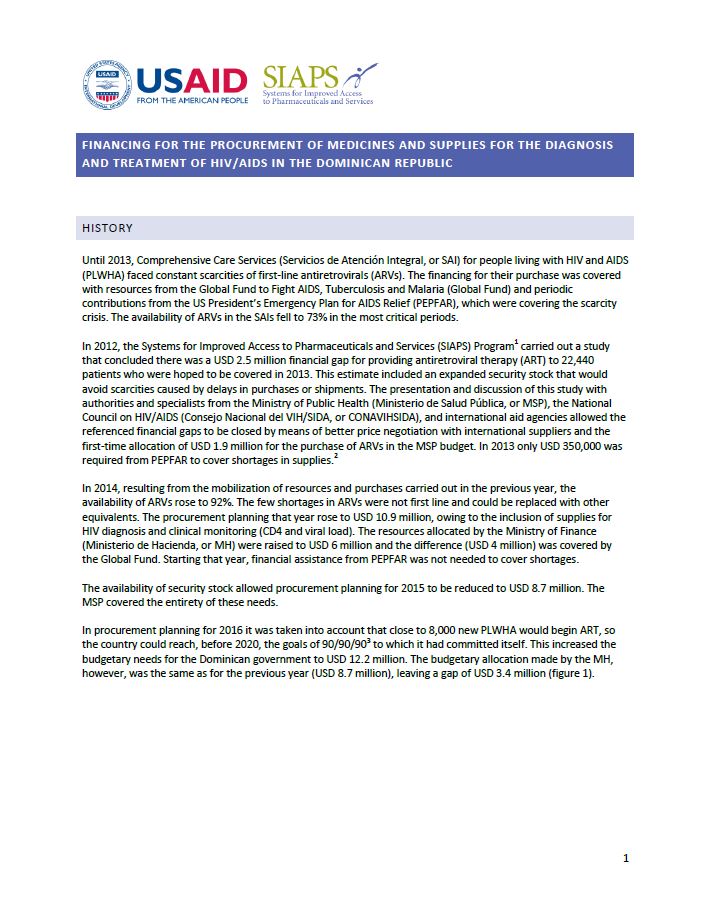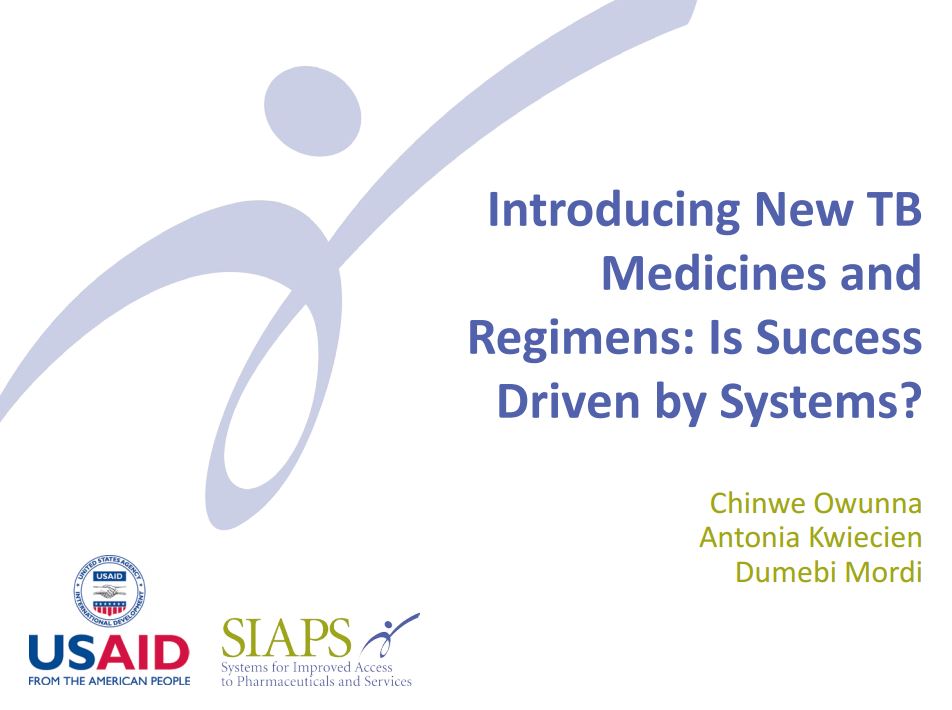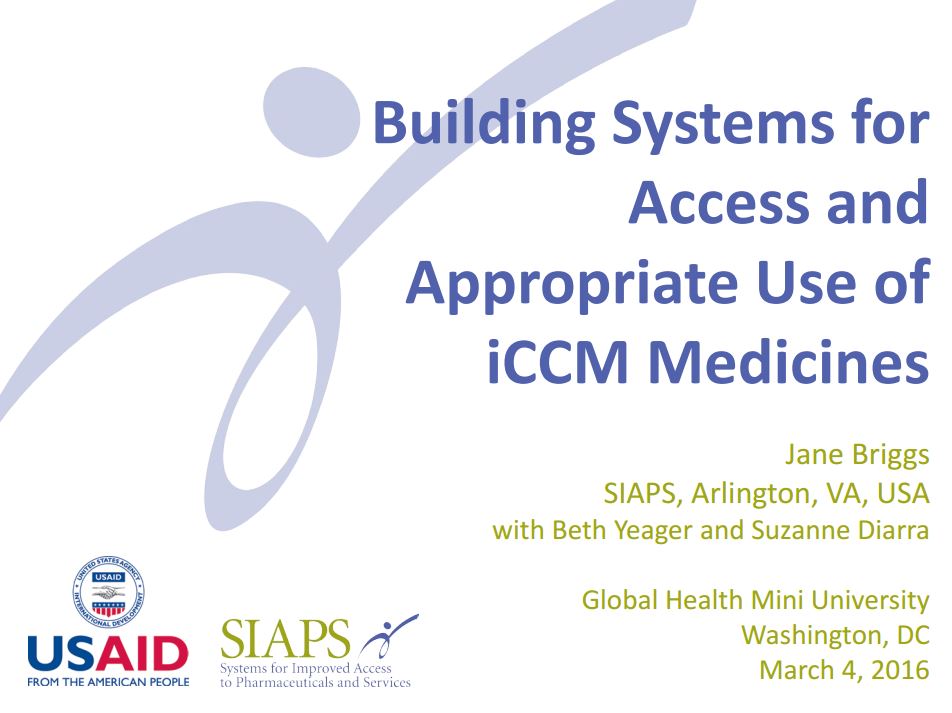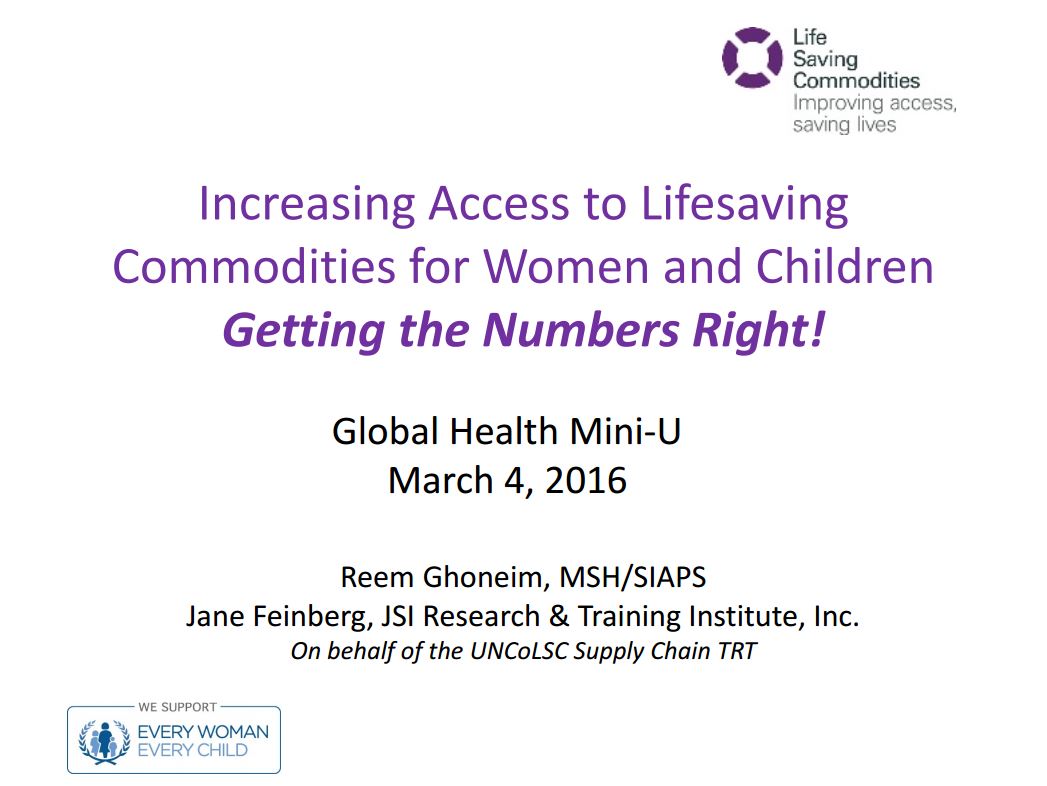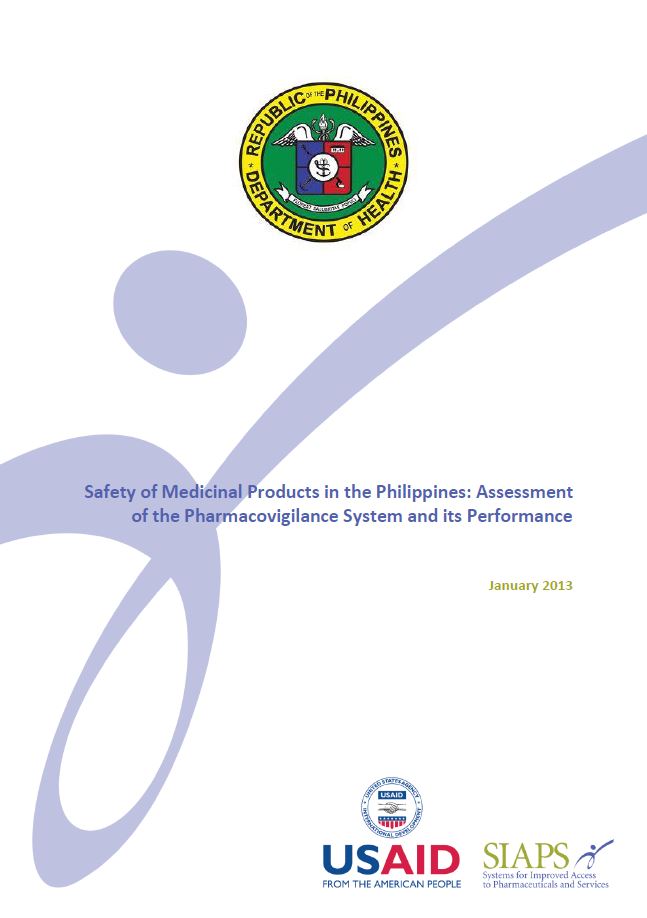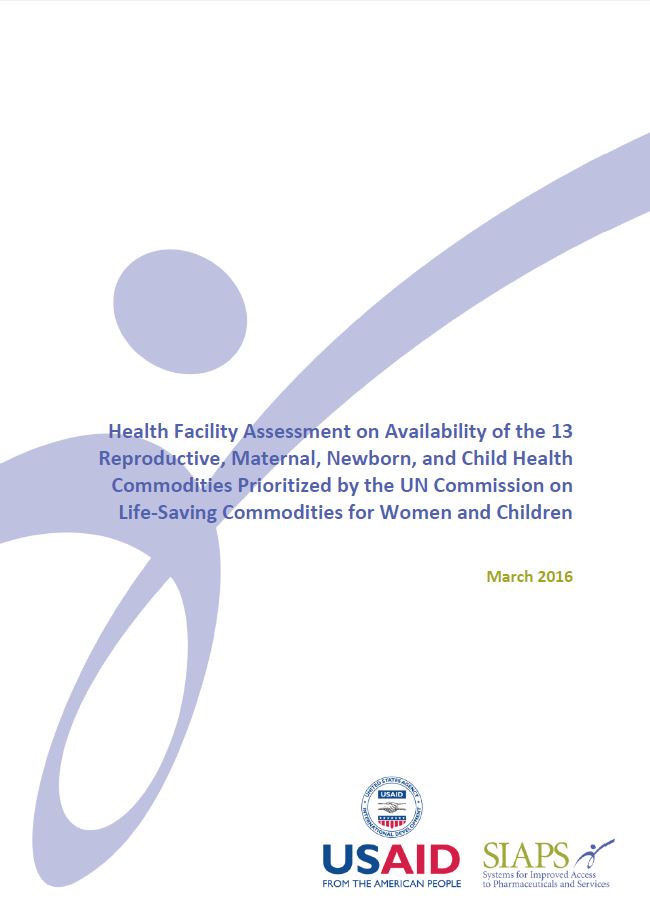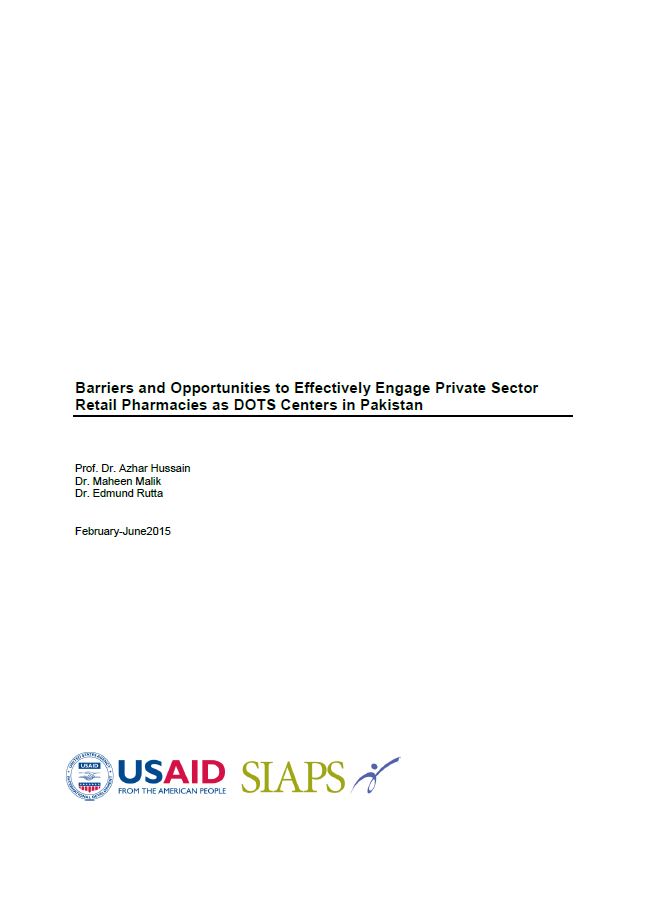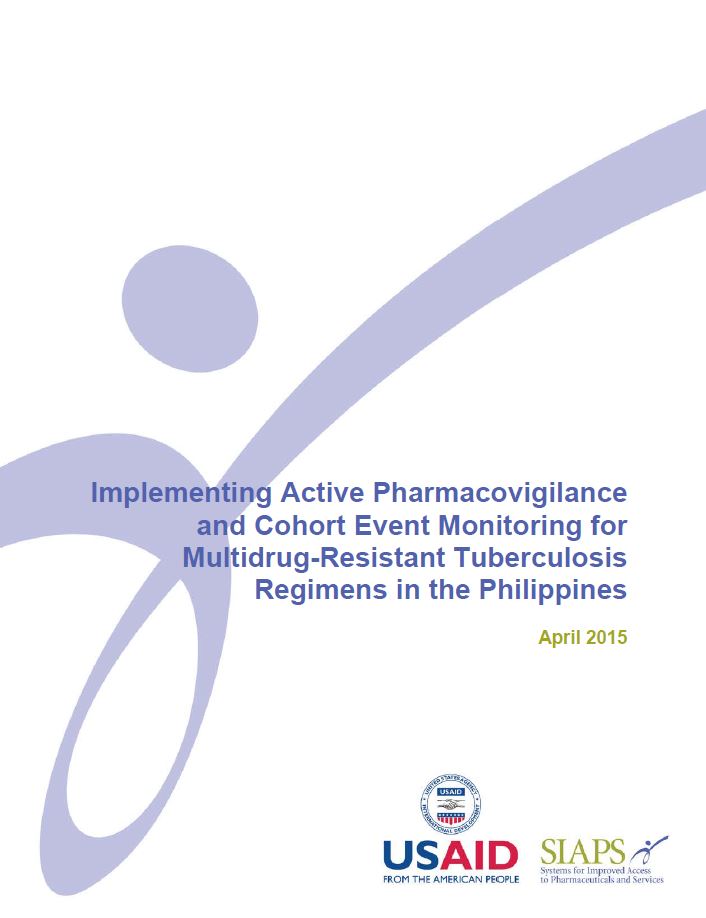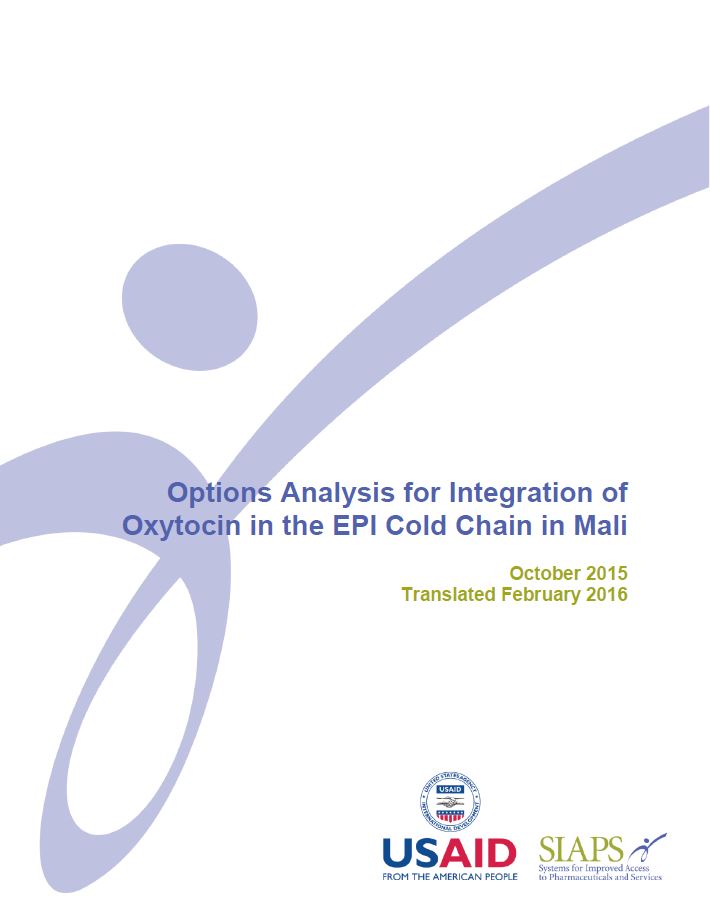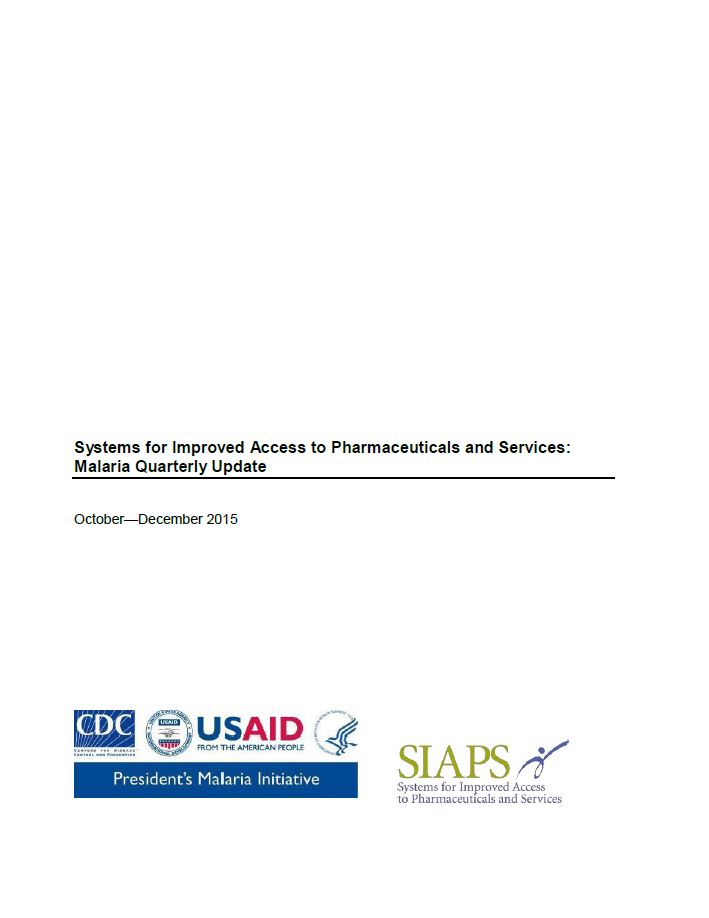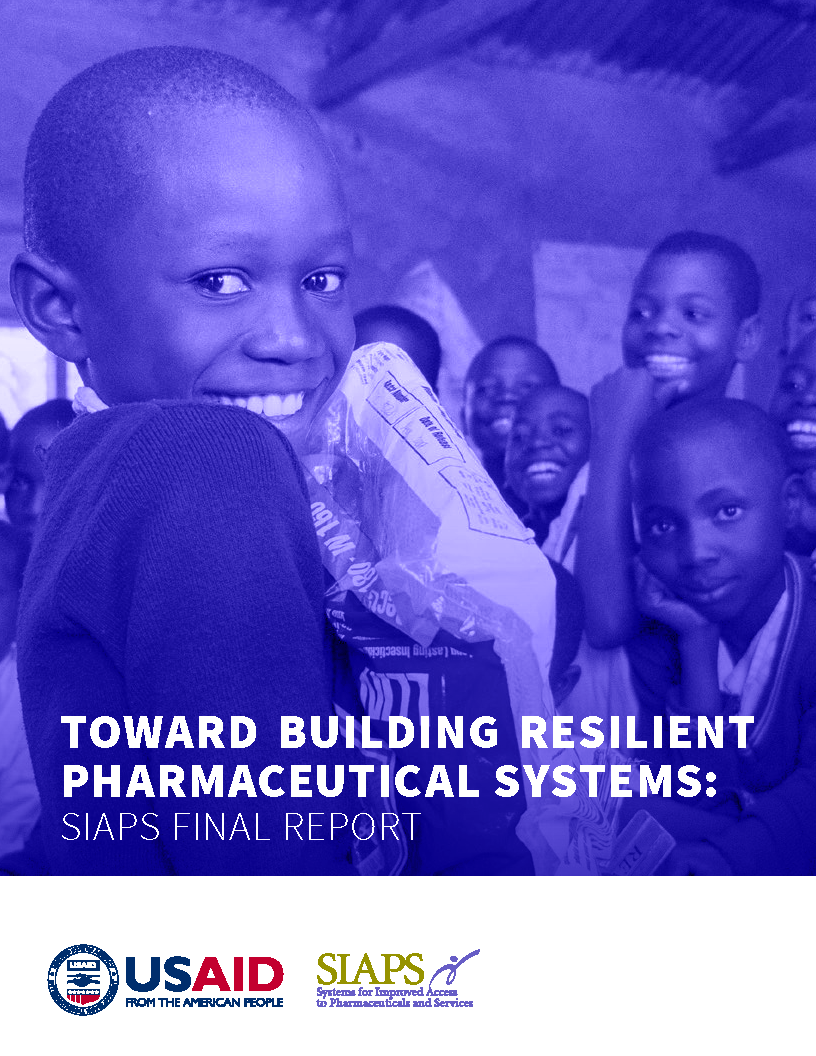In 2012, the Systems for Improved Access to Pharmaceuticals and Services (SIAPS) Program carried out a study that concluded there was a USD 2.5 million financial gap for providing antiretroviral therapy (ART) to 22,440 patients who were hoped to be covered in 2013. This estimate included an expanded security stock that would avoid scarcities caused … Read more
Owunna C, Kwiecien A, Mordi D. Introducing New TB Medicines and Regimens. This seminar was presented as part of the 2016 USAID Global Health Mini-University. For more information on the Mini-University, visit www.mini-university.com.
Ghoneim R, Feinberg J. Increasing Access to Lifesaving Commodities for Women and Children: Getting the Numbers Right. This seminar was presented as part of the 2016 USAID Global Health Mini-University. For more information on the Mini-University, visit www.mini-university.com.
The Food and Drug Administration (FDA) Philippines, with support from the US Agency for International Development (USAID)-funded Systems for Improved Access to Pharmaceuticals and Services (SIAPS) Program conducted an assessment of the Philippines’ pharmacovigilance (PV) system and its components. They are (1) governance, policy, law, and regulation; (2) systems, structures, and stakeholder coordination; (3) signal … Read more
Every day, about 800 women die from preventable causes related to pregnancy and childbirth. Although great strides have been made in reducing global child mortality, newborns now account for 44% of all childhood deaths. Ethiopia contributes to more than 4% of all global maternal deaths, which were estimated at 1,300 in 2013. In 2010, the … Read more
A Korra, Assessment, commodities, E Ejigu, Ethiopia, H Tadeg, Reproductive Maternal Newborn and Child Health, RMNCH, Supply chain management, Technical Report, W Getahun
As part of an ongoing pilot project to engage about 500 private retail pharmacies in six cities of Pakistan (Islamabad, Rawalpindi, Lahore, Peshawar, Karachi, and Sukkur) in the early detection and referral of tuberculosis (TB) cases, stakeholders in the National TB Program (NTP) have discussed the potential of pharmacies providing DOTS to clients. The present … Read more
The Systems for Improved Access to Pharmaceuticals and Services (SIAPS) Program is a five- year cooperative agreement funded by the United States Agency for International Development (USAID) and implemented by Management Sciences for Health (MSH). The goal of SIAPS is to improve the availability of quality pharmaceutical products and effective pharmaceutical services through strengthening pharmaceutical … Read more
The Maternal Health Technical Resource Team (MHTRT) of the UN Commission on Life-Saving Commodities for Women and Children has been exploring strategies to increase access to quality oxytocin, including advocating for the integration of oxytocin in the existing cold chain for the Expanded Programme on Immunization (EPI). Some countries, such as Mali and Ghana, have … Read more
B Yeager, CS Berthé, DS Dione, EPI, Integrated System, Mali, MW Pachuto, options analysis, oxytocin, Reproductive Maternal Newborn and Child Health, SF Sangho
According to the World Health Organization (WHO), the number of malaria deaths malaria mortality rates fell by 48% globally, and the number of malaria cases by 18% between 2000 and 2015. During this period, it is estimated that 6.2 million fewer malaria deaths occurred globally, primarily as a result of the scale-up of interventions. However, … Read more
